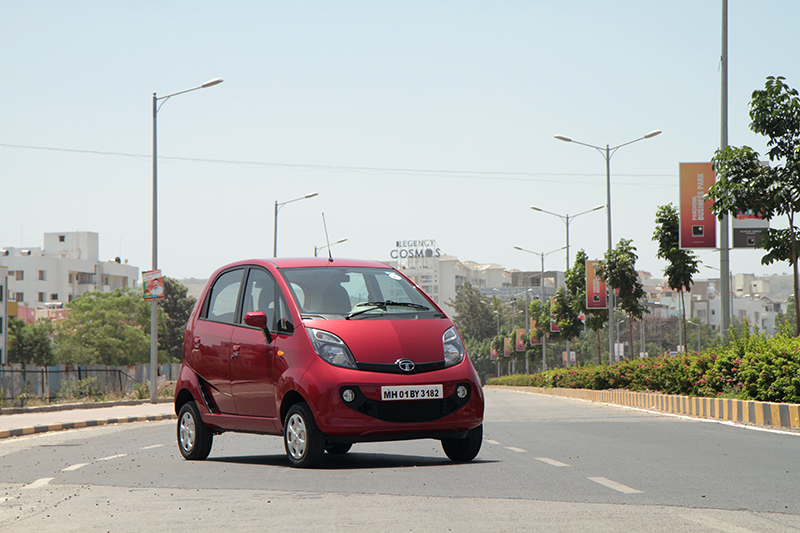
Power continues to come from the old 38 PS and 51 Nm 624cc twin-cylinder petrol injected engine, but now with a drive-by-wire throttle. Tata Motors have also worked on the fuel injection system, as a result of which the power delivery at slow speeds is now more linear than before with the throttle no longer behaving like an on-off switch. The most significant change to the powertrain however is the automated manual transmission (AMT). The five-speed Magneti Marelli sourced unit is similar to the ones used in the Zest and Bolt. On the go it felt confused at times as it shifted up and down trying to keep pace with throttle inputs. Cruising at a constant speed is a much better experience where changes in throttle inputs are more gradual. The fifth ratio of the AMT is very tall and once fifth is selected (either automatically or in manual mode) the little car seems to lose all steam. Clearly, there’s scope for improvement in the actual functioning of the AMT. However, what cannot be denied is the amount of convenience it provides for the user. Not to mention the pioneering attitude of the company in providing an automated transmission at this segment of the Indian automotive market. There is of course the manual version as well, with a four-speed gearbox. In fact, the aforementioned difference in boot spaces in the two versions of the Nano also stems from the differences in transmissions.
The suspension too is unaltered and as a result, the drive-feel of the Nano where ride quality and handling are concerned are much the same as on the old car. It is extremely manoeuvrable and with its tight turning circle dia of just four metres, you can execute a perfect U-turn without requiring the Reverse gear on most occasions. However bends at speeds closer to its top speed are less stable. The power steering unit does make driving around more comfortable but there isn’t much by way of feedback. Ride quality again is much the same as in the older versions. Bumps, ruts and potholes are quite clearly felt.
The 180mm dia drum brakes at the four wheels have just about sufficient bite to bring the car to a halt. However, what is lacking is progression. As a result one gets the feeling that the brakes haven’t engaged at all for the first few centimetres of pedal travel. While the unit works just fine, it does take time getting used to.
For a more detailed review, read our First Drive report in the forthcoming June issue of Car India.





















Leave a Reply